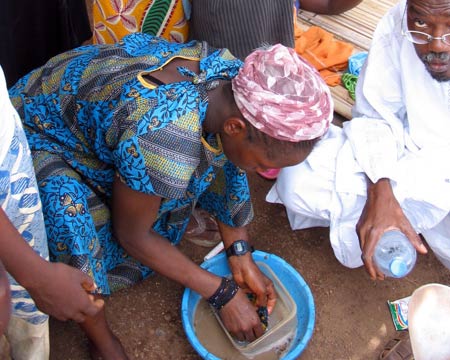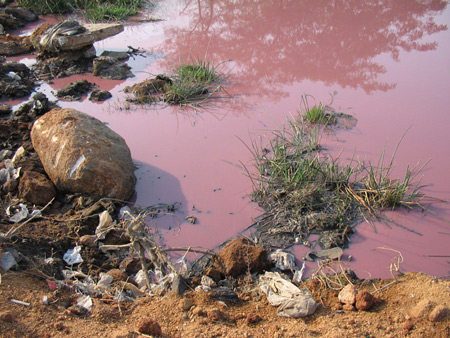The 10 biggest dangers to the environment and people
Cooking with charcoal is one of the leading threats to human health. Meanwhile, contaminated surface water is even more frightening than radioactive waste and untreated wastewater.
10 most dreadful sources of pollution for the environment and people
Green Cross (Switzerland) and the Blacksmith Institute (USA) have announced the 10 most polluting sources but are rarely mentioned in the debate about environmental protection. The list is based on standards set by an international group of environmental and health experts, in which the most important criteria are toxicity, toxic ways and the number of people who may be affected. .
Below is a list given by two organizations:
- Treat gold with rudimentary tools
- Surface water poisoning
- Groundwater poisoning
- Poison in the house
- Industrial mining
- Metal melting and machining
- Radioactive materials and scrap from uranium ore mining
- Waste water is not treated
- Air pollution in the city
- Regenerating batteries

Gold bullion is the biggest threat in the list. People who use mercury to treat gold not only harm themselves and their families but also poison nearby villages when the poison escapes into the environment. About 15 million people suffer from mercury damage used to treat gold.

Heavy metals and organic matter from industrial production penetrate people by using this water to cook or irrigate crops.

All wells dug into groundwater can be poisoned. In addition, contaminated groundwater can also flow into rivers or lakes.

Burning coal, wood and sawdust for cooking, heating and lighting are the main causes of indoor toxins. Due to the lack of ventilation, the rooms use coal, firewood or manure to cook and contain many toxic fumes, leading to respiratory diseases and lung cancer. More than half of the world's population cooks with charcoal and firewood, especially in India, China and countries in southern Africa. According to reports, charcoal causes 3 million deaths each year and causes 4% of cases worldwide.

The biggest problem of mining is waste containing toxic substances that harm agriculture and water in the region.

Severe polluted environment during metal smelting: SO 2 , NO, toxic vapors and heavy metals are released into the environment into the body through the airways .

Radioactive waste causes great harm to human health, from cancer to death.

Untreated wastewater causes diseases such as cholera, typhoid, dysentery, hepatitis. WHO estimates that every year about 1.5 million people die from untreated wastewater.

Air pollution causes many respiratory and circulatory diseases. WHO estimates that every year, about 865,000 people die from air pollution which is the direct cause.

Batteries are often transported to poor countries. There lead is regenerated by rudimentary means. It causes many health consequences such as growth disorders, liver failure, mental retardation .
The Blacksmith Institute investigates the most severely polluted places in developing countries and offers remedial measures. The Swiss Green Cross organization works to overcome the consequences of industrial and military disasters .
- Young people are putting themselves ahead of online dangers
- Internet is a threat to wild animals
- The startling truths you need to know before swimming
- 4 dangers of death equal to smoking that we have never paid attention to
- The dangers you face if living in ancient Egypt
- The oil spill disaster on the sea will end with this invention
- What do people do before falling from the sky?
- Places with the most expensive clean water in the world
- Assassins invisible on the street
- The people were indifferent, the government let loose
- Strange fabrics themselves 'react quickly' to dangers
- How does the lamb receive the mother in the crowd?
 Is the magnetic North Pole shift dangerous to humanity?
Is the magnetic North Pole shift dangerous to humanity? Washington legalizes the recycling of human bodies into fertilizer
Washington legalizes the recycling of human bodies into fertilizer Lightning stone - the mysterious guest
Lightning stone - the mysterious guest Stunned by the mysterious sunset, strange appearance
Stunned by the mysterious sunset, strange appearance